For too long, “social housing” has conjured images of monolithic, impersonal blocks, often lacking in both aesthetic appeal and genuine community connection. But this perception is increasingly outdated. Across Europe, architects and designers are challenging these stereotypes, creating innovative and sustainable social housing projects that prioritize not only affordability but also design excellence, environmental responsibility, and vibrant community building.
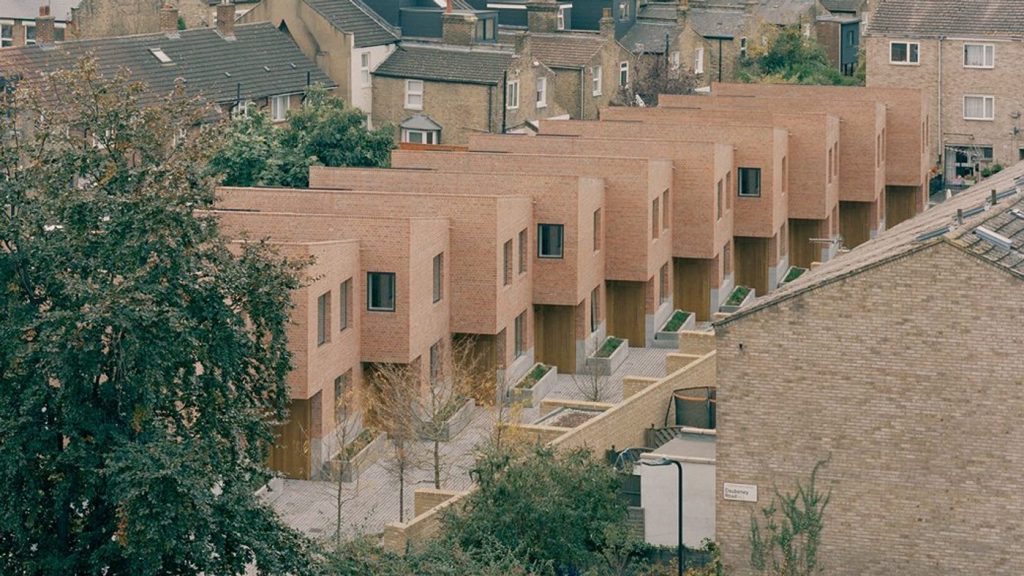
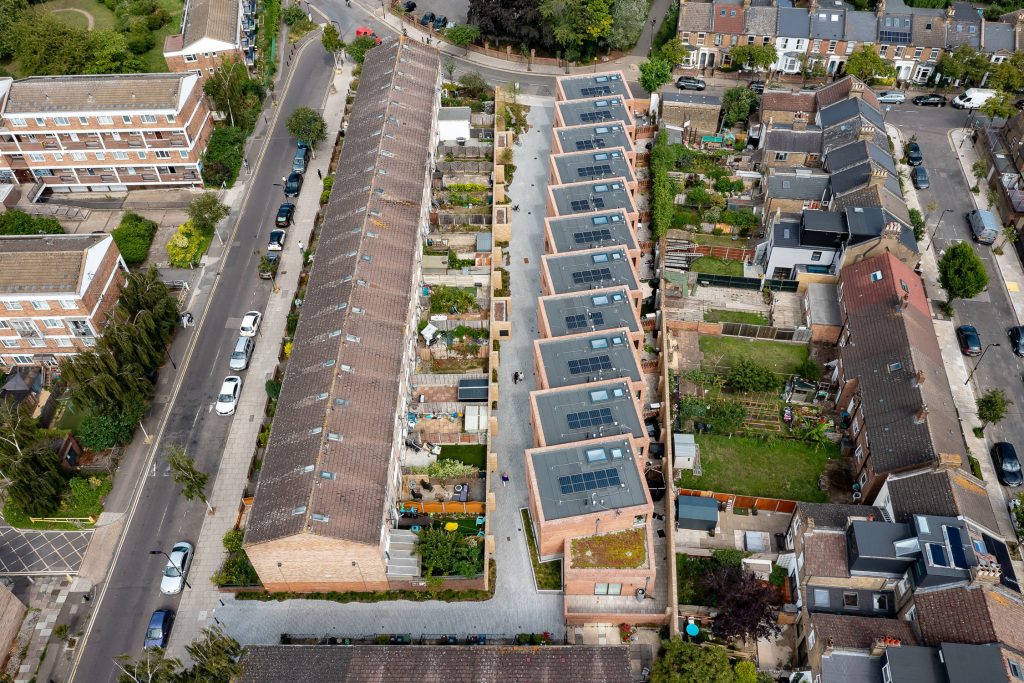
Chowdhury Walk by Al-Jawad Pike (also header image)
Chowdhury Walk, a striking new development by Hackney Council, challenges the often-monolithic appearance of social housing with a confident, sculptural form that immediately catches the eye. This infill project, replacing a collection of garages and car parking spaces, demonstrates a commitment to design excellence that extends far beyond basic functionality. The architects, Al-Jawad Pike, have crafted a staggered two-story terrace, creating a vibrant streetscape that feels both modern and welcoming, while simultaneously respecting the existing neighborhood context.

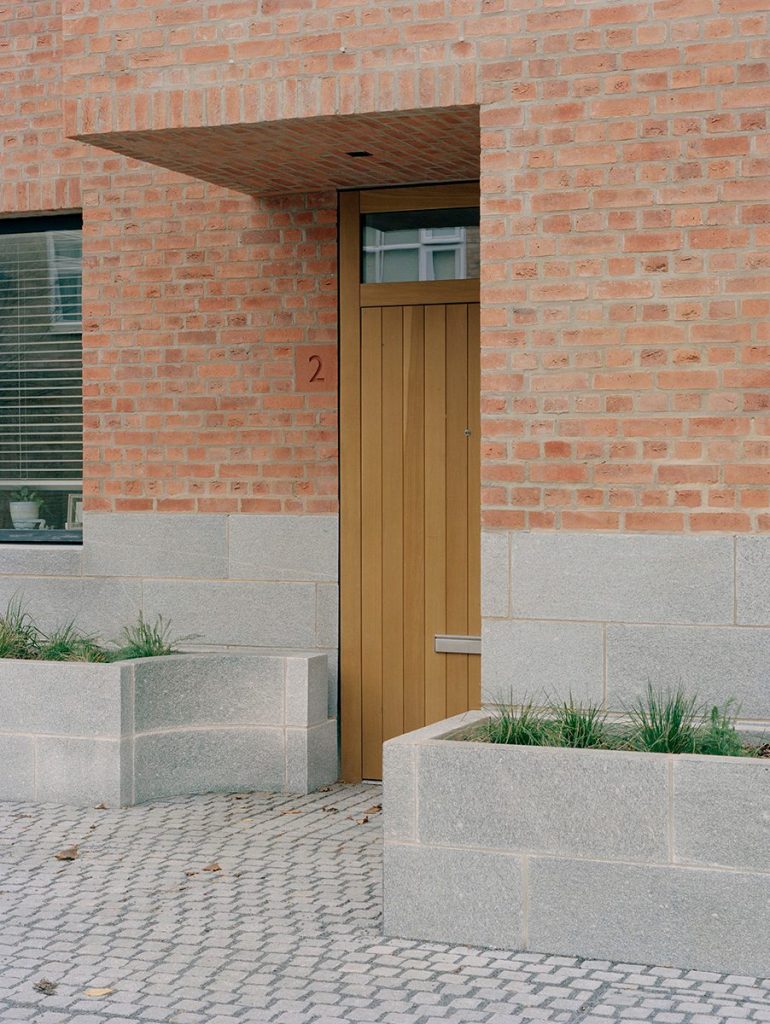
Chowdhury Walk by Al-Jawad Pike
The innovative design of Chowdhury Walk is evident in its subtle yet impactful details. Recognizing the need to avoid a monotonous block, the architects subtly rotated each house in the terrace, creating a dynamic rhythm along the public thoroughfare. This thoughtful rotation not only breaks up the visual repetition of windows and doors but also optimizes the flow of light and shadow across the facades, resulting in a playful and engaging architectural experience. The design also considers the residents’ needs and privacy, ensuring each home has an individual frontage while also avoiding direct overlooks of their neighbours.
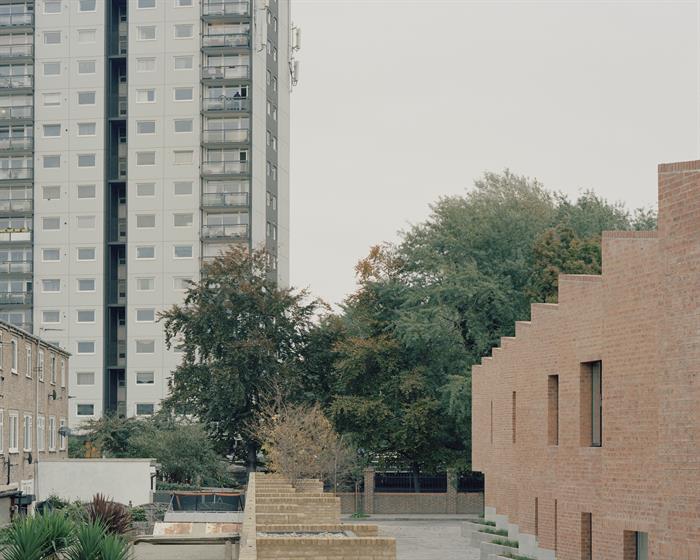
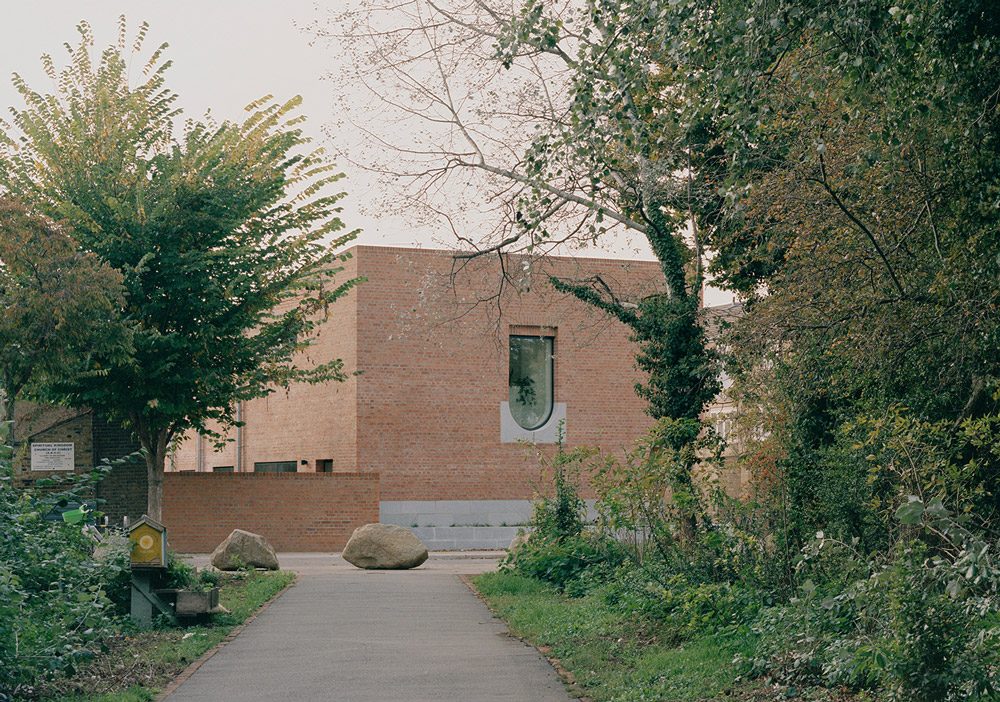
Chowdhury Walk by Al-Jawad Pike
Sustainability is subtly woven into the fabric of Chowdhury Walk. While specifics aren’t detailed in the provided information, the project’s efficiency of space and the use of a considered design approach hints at a responsible use of resources. Furthermore, the project’s location, utilizing an existing brownfield site, promotes urban infill and reduces the need for greenfield development. Seven of the homes are dedicated to social rent, ensuring access to high-quality housing for the community, a crucial aspect of any truly sustainable approach.
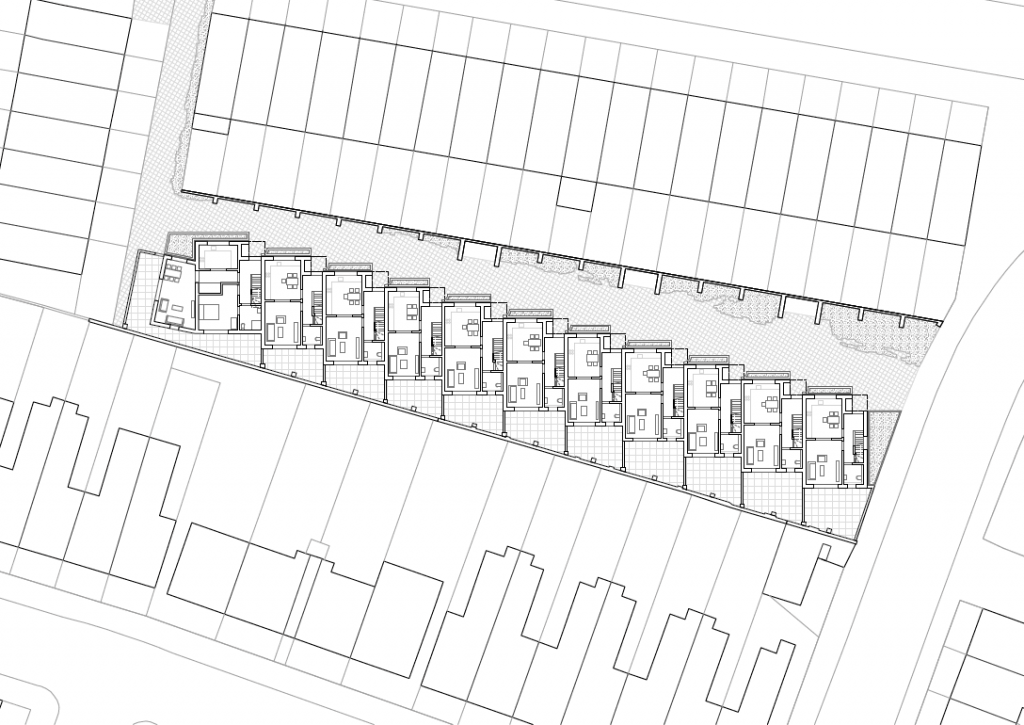
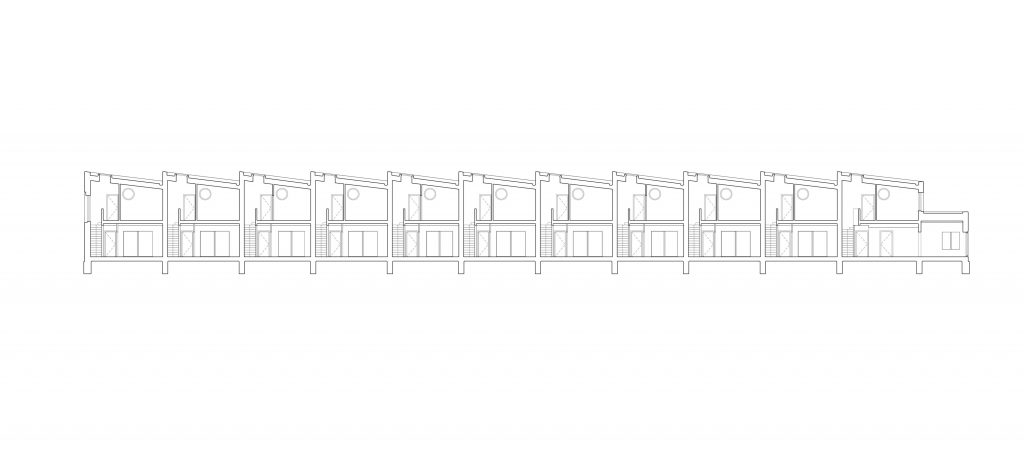
Chowdhury Walk by Al-Jawad Pike
Ultimately, Chowdhury Walk provides an exemplary blueprint for social housing, as recognized by its Neave Brown Award for Housing shortlisting. By prioritizing design and considering the nuances of place, the architects and the council have created a development that is not just functional but also aesthetically pleasing and thoughtfully integrated into its surroundings. This project demonstrates that exceptional design can elevate social housing, creating desirable and comfortable homes while simultaneously enriching the surrounding urban landscape.
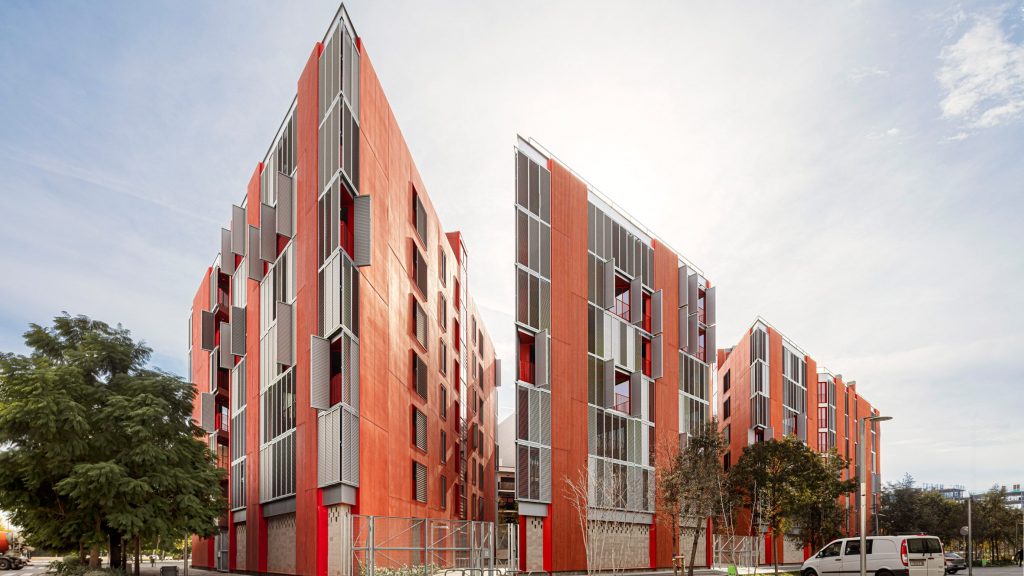
Marina del Prat Vermell by MIAS and Coll-Leclerc Architects
Barcelona’s Marina del Prat Vermell social housing complex, a collaboration between MIAS and local practice Coll-Leclerc Architects, stands out with its vibrant color palette and dynamic facade. The seven-story building, clad in terracotta-colored glass-reinforced concrete, offers 72 apartments designed with a focus on porosity and individual expression. Referencing the area’s history in textile manufacturing, the architects incorporated bold red accents, creating a striking visual identity that celebrates the neighborhood’s unique heritage.
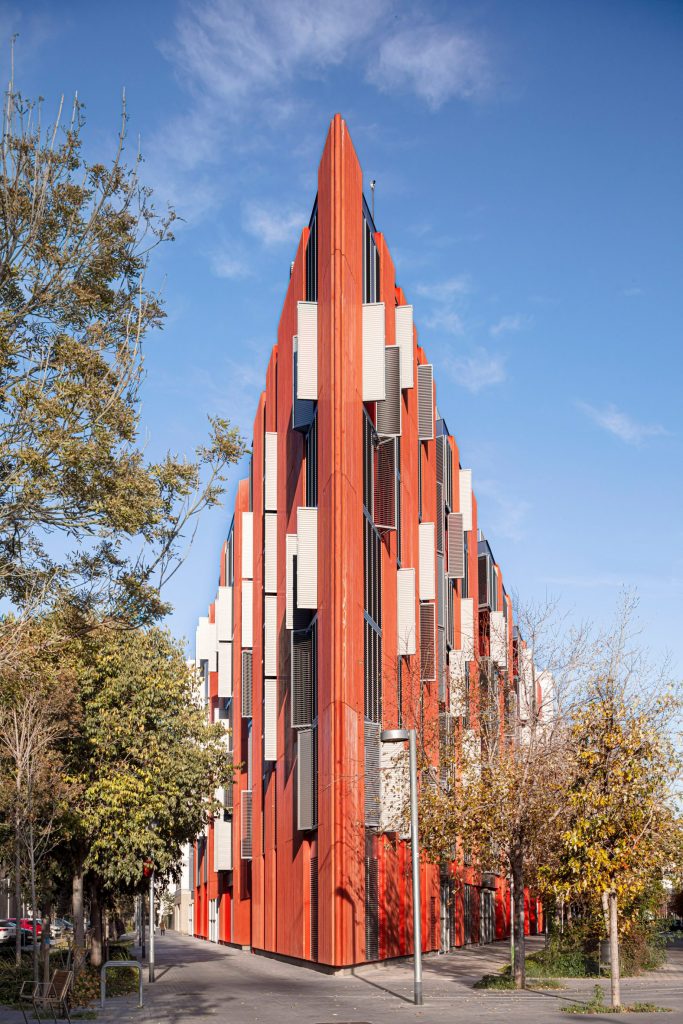
Marina del Prat Vermell by MIAS and Coll-Leclerc Architects
Innovation in design is at the heart of Marina del Prat Vermell. To maximize the number of units and avoid long, impersonal corridors, the architects divided the building into three smaller, porous blocks connected by planted pathways. This approach created corner apartments with ample access to light, air, and expansive views, giving residents the feeling of living in detached single-family homes. The movable metal shutters lining the covered terraces not only provide sun protection but also animate the facade, reflecting the vibrant red interiors and creating a dynamic interplay of light and color.
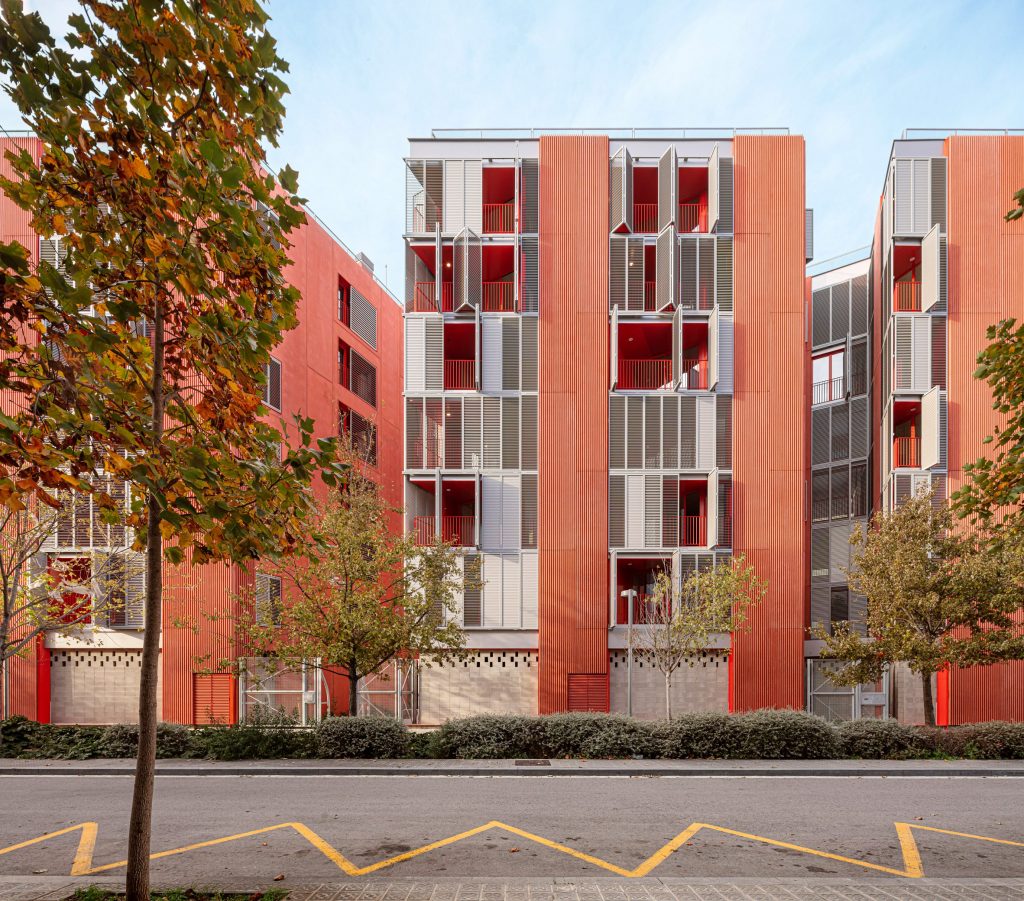
Marina del Prat Vermell by MIAS and Coll-Leclerc Architects
Sustainability is thoughtfully integrated into the project through various elements. The rooftops are covered with a combination of planting and photovoltaic panels, contributing to approximately half of the building’s energy consumption. This commitment to renewable energy, combined with the creation of porous blocks that encourage natural ventilation and reduce the need for artificial cooling, demonstrates a holistic approach to sustainable design. By prioritizing the well-being of its residents and minimizing its environmental impact, Marina del Prat Vermell sets a strong precedent for responsible social housing.
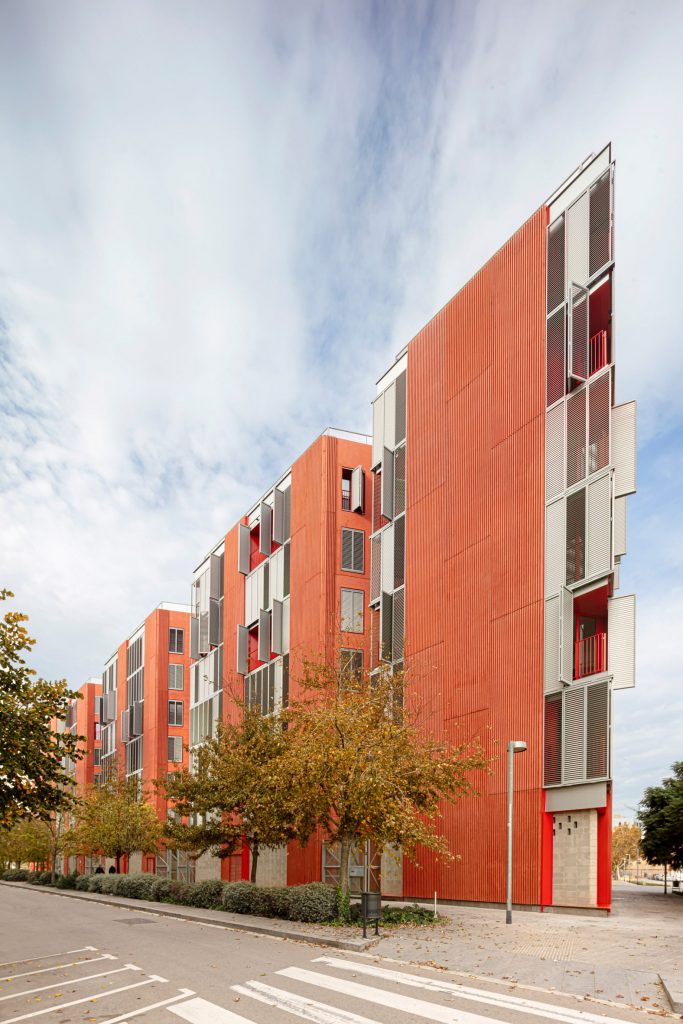
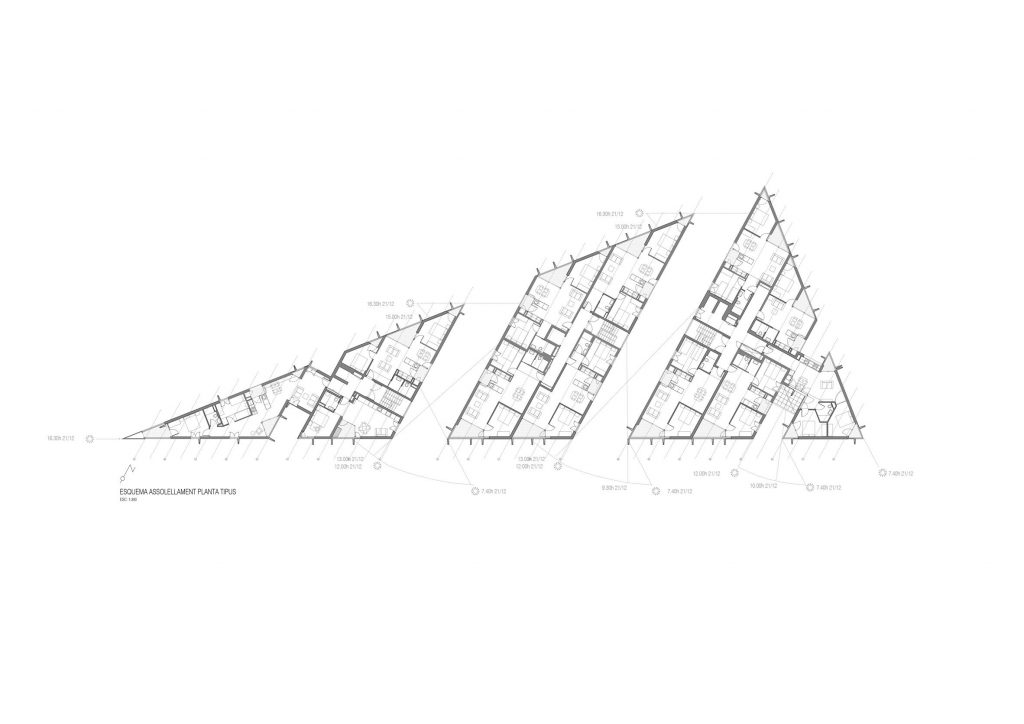
Marina del Prat Vermell by MIAS and Coll-Leclerc Architects
Marina del Prat Vermell successfully challenges the stereotypical image of monotonous social housing by embracing color, promoting individual expression, and prioritizing the comfort and well-being of its residents. Through innovative design solutions and a commitment to sustainable practices, this project has created a vibrant and welcoming community that celebrates its history while looking towards a brighter, more sustainable future. The result is a unique and inspiring model for social housing that prioritizes both aesthetics and functionality.

54 Public Protection Housing by Joan J Fortuny and Alventosa Morell Arquitectes
In Inca, Mallorca, Spanish architect Joan J Fortuny and Alventosa Morell Arquitectes have delivered 54 social housing units that celebrate local materials and vernacular design while prioritizing community and sustainability. The project, designed as a response to its urban context, consists of two distinct volumes connected by a vibrant “interior street,” fostering a sense of community while avoiding the pitfalls of a gated complex. The entire project is unified by beautiful larch shutters and perforated bricks, which provide visual harmony and a nod to Mallorcan tradition.
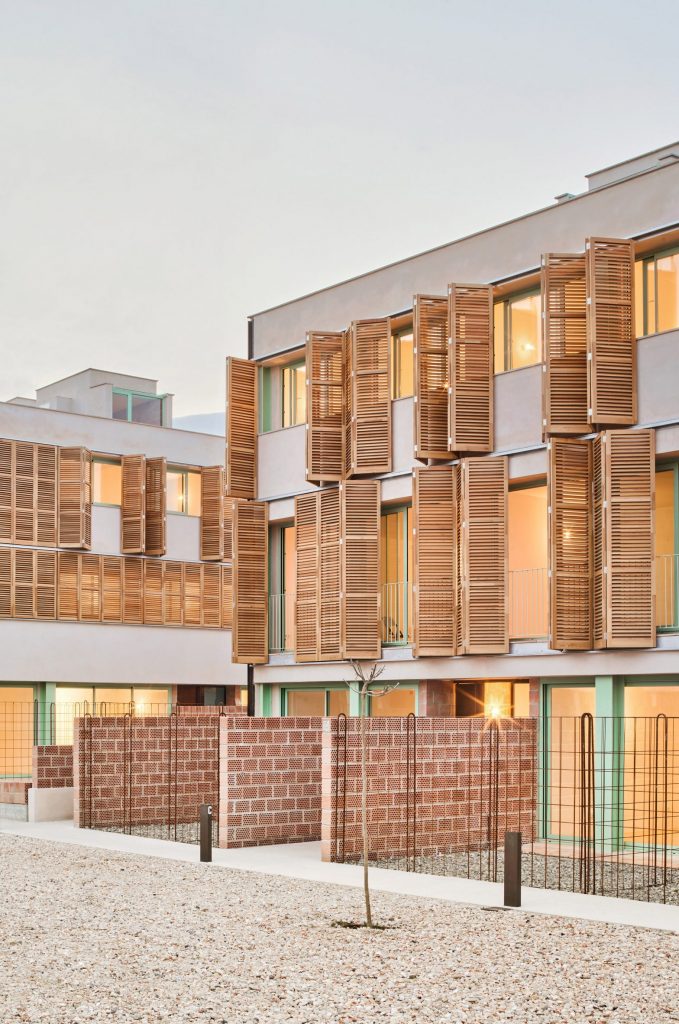
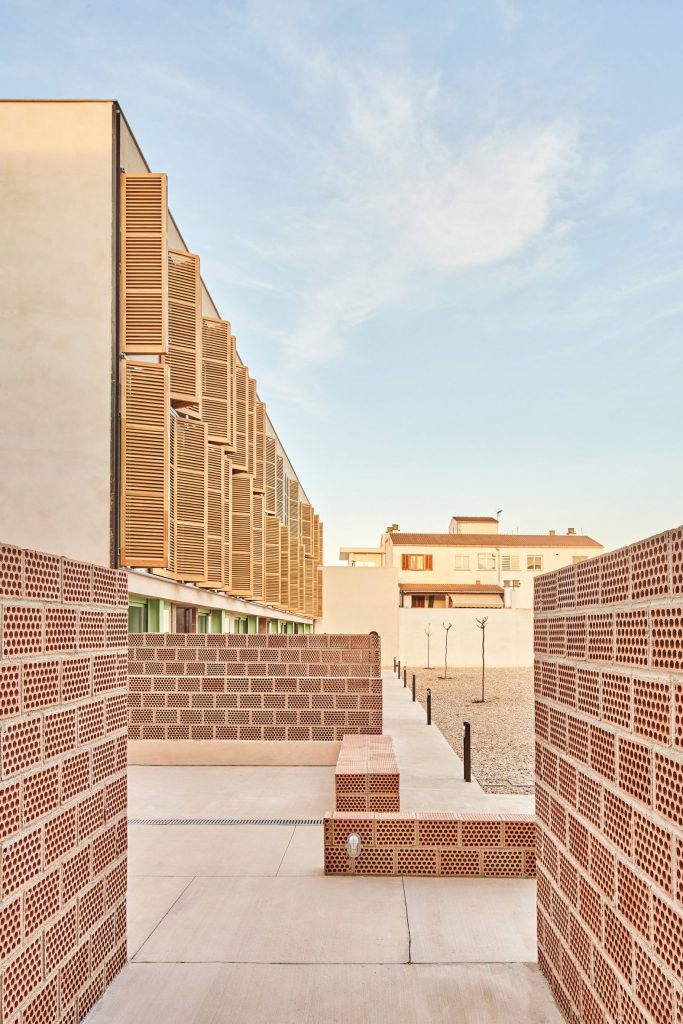
54 Public Protection Housing by Joan J Fortuny and Alventosa Morell Arquitectes
The design of the Inca social housing is rooted in functionality and cultural sensitivity. The larch shutters, sourced locally, serve not only as a unifying aesthetic element but also as a practical solution for climate control. Drawing inspiration from traditional Mallorquin “Persianas,” these shutters provide solar protection and facilitate cross-ventilation, reducing the need for energy-intensive cooling systems. The thoughtful layout of the apartments, with a wet service core and dual-aspect living spaces, ensures comfortable and adaptable living conditions for all residents.
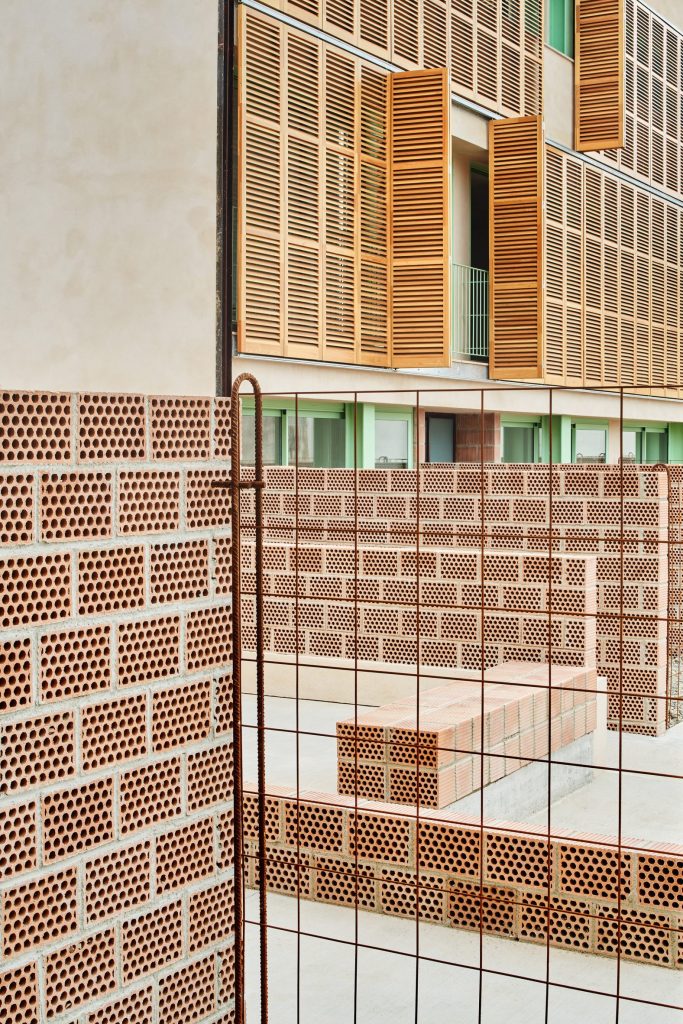
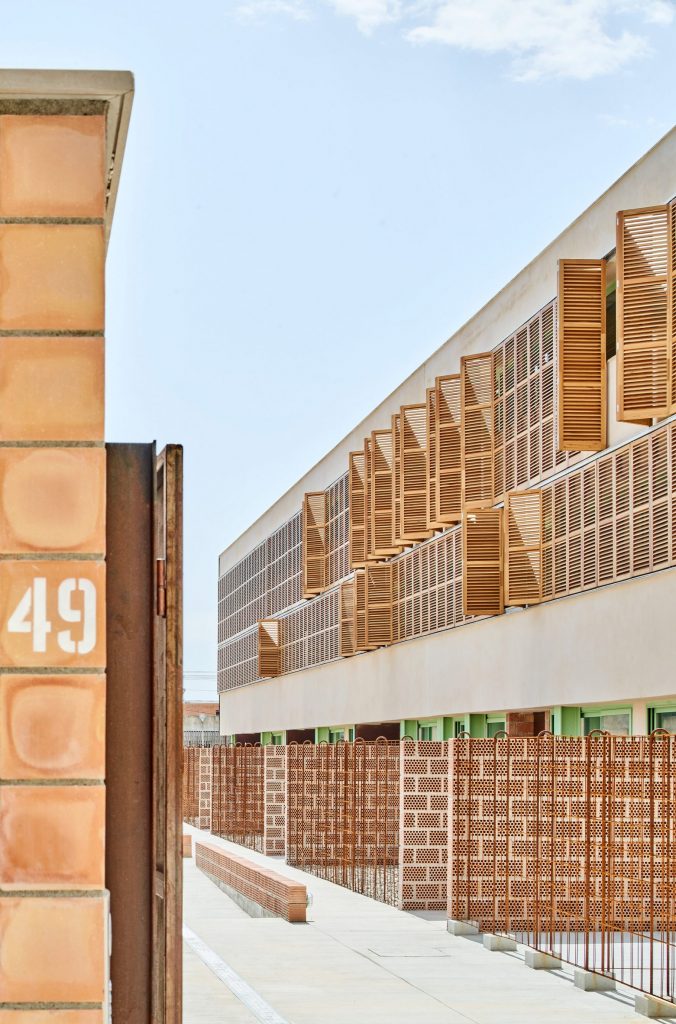
54 Public Protection Housing by Joan J Fortuny and Alventosa Morell Arquitectes
Sustainability is central to the ethos of this project, evident in the prioritisation of locally sourced materials and traditional craftsmanship. Ceramic tiles and perforated bricks contribute to the building’s thermal mass, enhancing its energy efficiency, while recycled gravel from urban mining covers the roofs, reducing waste. Photovoltaic panels provide the building’s electricity needs, and an air source heat pump ensures efficient heating and cooling, minimizing the project’s environmental footprint. The architects’ commitment to local resources and a sustainable design model demonstrates a responsible approach to building in a resource-conscious world.
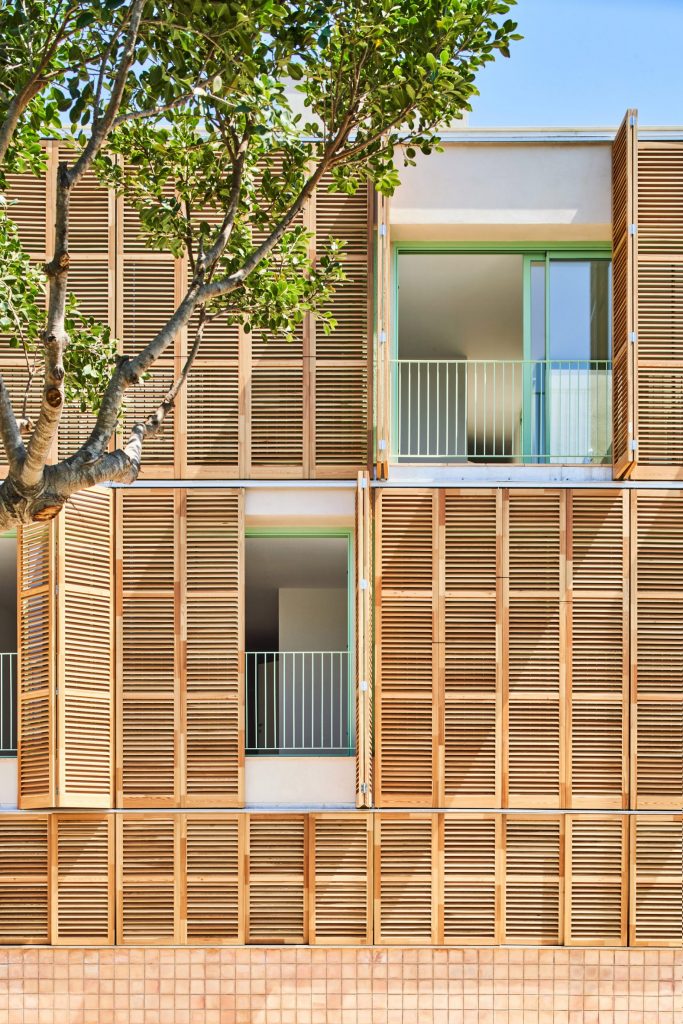
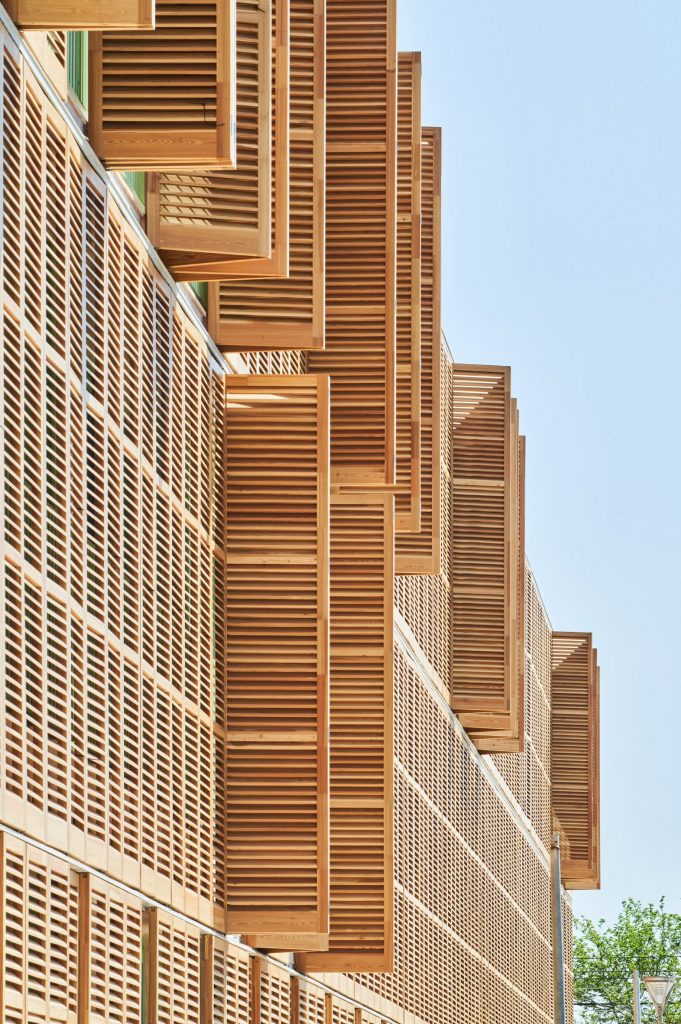
54 Public Protection Housing by Joan J Fortuny and Alventosa Morell Arquitectes
By embracing local materials, vernacular design, and innovative sustainable strategies, the Inca social housing project offers a compelling vision for the future of social housing. This project showcases that a design that is sensitive to the local context can also be a catalyst for community building and environmental responsibility. The result is a beautiful, functional, and sustainable housing complex that enriches the lives of its residents and contributes positively to the surrounding urban landscape.